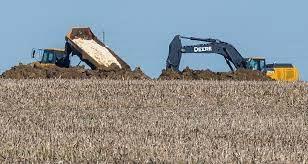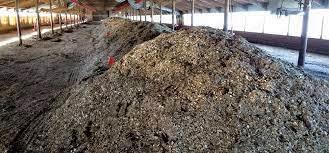F ollowing the 2015 epornitic of Highly Pathogenic Avian Influenza, the USDA Animal Plant Health Inspection Service (APHIS) requested public comment on a final environmental assessment entitled, High Pathogenicity Avian Influenza Control in Commercial Poultry Operations – a National Approach. The original request for comments was withdrawn but has now been renewed. This is apparently motivated by the extent of the 2022 (and ongoing) epornitic of H5N1 strain of avian influenza resulting in depopulation and disposal of 56 million birds of various species. The draft Environmental Assessment, was published in April 2022 to allow USDA-APHIS Veterinary Services to carry out emergency outbreak responses following the initial cases in seven states during the first quarter of 2022.
ollowing the 2015 epornitic of Highly Pathogenic Avian Influenza, the USDA Animal Plant Health Inspection Service (APHIS) requested public comment on a final environmental assessment entitled, High Pathogenicity Avian Influenza Control in Commercial Poultry Operations – a National Approach. The original request for comments was withdrawn but has now been renewed. This is apparently motivated by the extent of the 2022 (and ongoing) epornitic of H5N1 strain of avian influenza resulting in depopulation and disposal of 56 million birds of various species. The draft Environmental Assessment, was published in April 2022 to allow USDA-APHIS Veterinary Services to carry out emergency outbreak responses following the initial cases in seven states during the first quarter of 2022.

The proposed action alternatives include:
- No action alternative. This would involve business-as-usual, including surveillance of commercial and backyard flocks, depopulation of infected farms and disposal of flocks with indemnity followed by decontamination. This alternative would require active involvement of state and local agencies to respond to outbreaks of HPAI.
- Alternative to standard procedure. Current activities including surveillance, depopulation and indemnity would continue with disposal involving burial or landfill compliant with the Resource Conservation and Recovery Act, rendering, incineration, alkaline hydrolysis, anaerobic digestion with individual or combined methods of disposal.
- Adaptive management alternative. This approach would potentially combine standard procedures with any emerging technologies in accordance with risk assessments and confirmation of efficacy.
This last approach is possibly the thin-end of a wedge to introduce immunization. This innovation in policy would allow the USDA-APHIS to justify establishing immune populations through vaccination to resolve the obvious problems of disposal of large numbers of commercial poultry as occurred in the 2015 and the ongoing 2022-2023 epornitics.
 Request for comments covers the environmental impact on soil, air and water quality, human health and safety, effects on industry and the economy, public perception, cultural and historic resources, environmental justice and wildlife and plant populations.
Request for comments covers the environmental impact on soil, air and water quality, human health and safety, effects on industry and the economy, public perception, cultural and historic resources, environmental justice and wildlife and plant populations.
There is a growing of realization that the USDA-APHIS should recognize that HPAI H5N1 is endemic in the U. S. This is based on the magnitude and extent of the epornitic. This has continued over twelve-months with the presence of cases in 35 states and involving a wide range of domestic avian and mammalian species demonstrating susceptibility. The possibility of aerogenous dissemination of virus, at least over short distances has the potential to invalidate conventional structural and operational biosecurity. Inexorably, segments of the industry and veterinary regulators are facing the reality that HPAI is at least regionally endemic in the U.S. This commentator now characterizes highly pathogenic avian influenza as the “Newcastle disease of the 2020s.” This potentially catastrophic infection is effectively controlled by universal vaccination and only occurs in nations where Newcastle disease vaccination is disallowed.